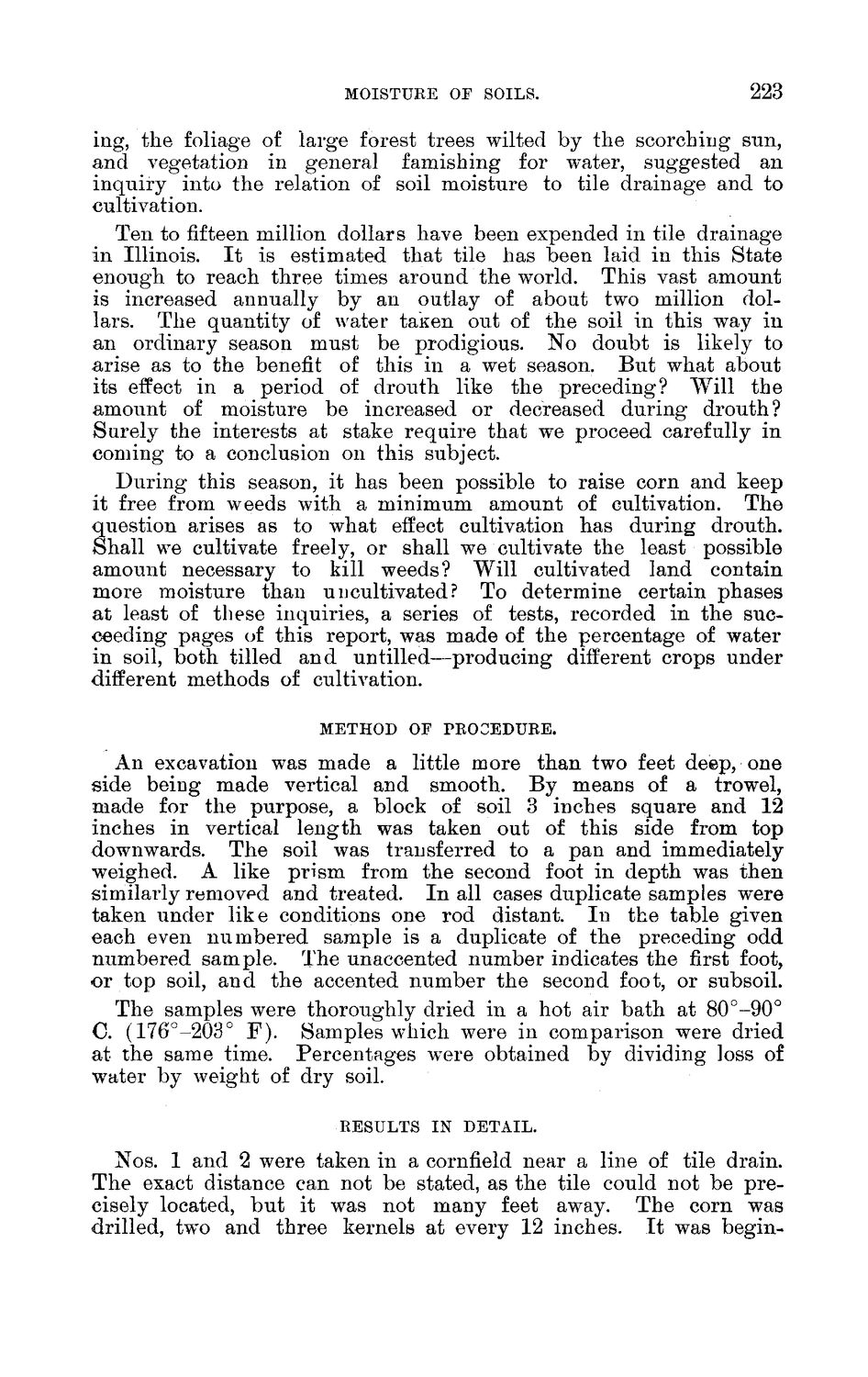| |
| |
Caption: Board of Trustees Minutes - 1888
This is a reduced-resolution page image for fast online browsing.

EXTRACTED TEXT FROM PAGE:
MOISTURE OF SOILS. 223 ing, the foliage of large forest trees wilted by the scorching sun, and vegetation in general famishing for water, suggested an inquiry into the relation of soil moisture to tile drainage and to cultivation. Ten to fifteen million dollars have been expended in tile drainage in Illinois. I t is estimated that tile has been laid in this State enough to reach three times around the world. This vast amount is increased annually by an outlay of about two million dollars. The quantity of water taxen out of the soil in this way in an ordinary season must be prodigious. No doubt is likely to arise as to the benefit of this in a wet season. But what about its effect in a period of drouth like the preceding? Will the amount of moisture be increased or decreased during drouth? Surely the interests at stake require that we proceed carefully in coming to a conclusion on this subject. During this season, it has been possible to raise corn and keep it free from weeds with a minimum amount of cultivation. The question arises as to what effect cultivation has during drouth. Shall we cultivate freely, or shall we cultivate the least possible amount necessary to kill weeds? Will cultivated land contain more moisture than uucultivated? To determine certain phases at least of these inquiries, a series of tests, recorded in the succeeding pages of this report, was made of the percentage of water in soil, both tilled and unfilled—producing different crops under different methods of cultivation. METHOD OF PROCEDURE. An excavation was made a little more than two feet deep, one side being made vertical and smooth. By means of a trowel, made for the purpose, a block of soil 3 inches square and 12 inches in vertical length was taken out of this side from top downwards. The soil was transferred to a pan and immediately weighed. A like prism from the second foot in depth was then similarly removed and treated. I n all cases duplicate samples were taken under like conditions one rod distant. In the table given each even numbered sample is a duplicate of the preceding odd numbered sample. The unaccented number indicates the first foot, or top soil, and the accented number the second foot, or subsoil. The samples were thoroughly dried in a hot air bath at 80°-90° C. (176°-203° F ) . Samples which were in comparison were dried at the same time. Percentages were obtained by dividing loss of water by weight of dry soil. RESULTS IN DETAIL. Nos. 1 and 2 were taken in a cornfield near a line of tile drain. The exact distance can not be stated, as the tile could not be precisely located, but it was not many feet away. The corn was drilled, two and three kernels at every 12 inches. I t was begin-
| |